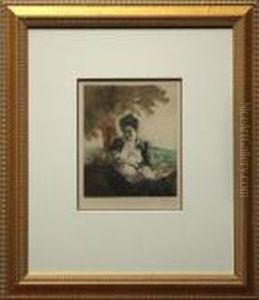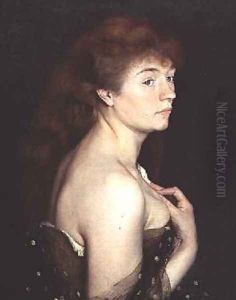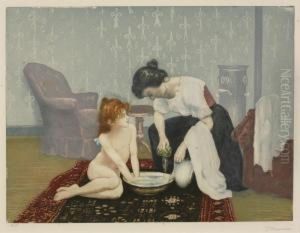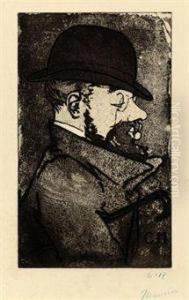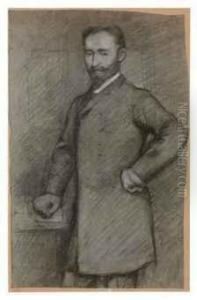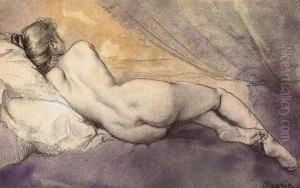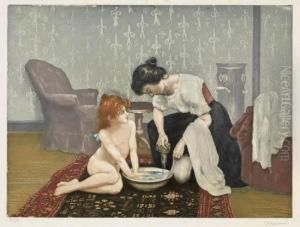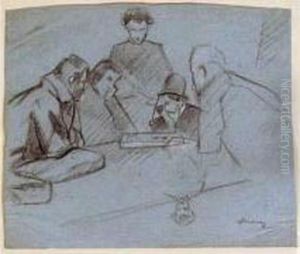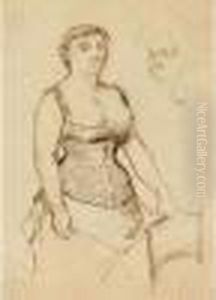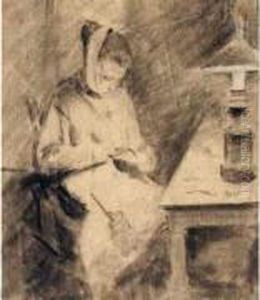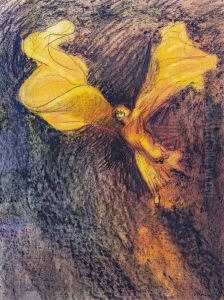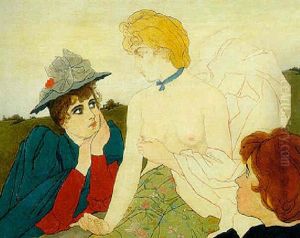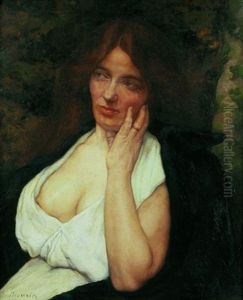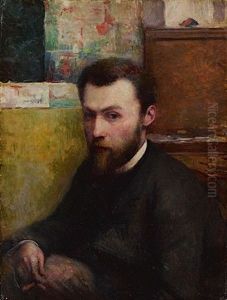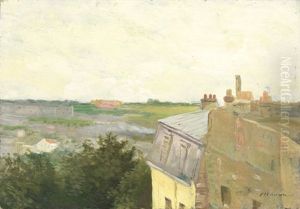Charles Maurin Paintings
Charles Maurin, born Pierre Charles Célestin Maurin on April 1, 1856, in Puy-en-Velay, France, was a French Symbolist painter and printmaker. Known for his paintings, engravings, and drawings, his work often reflects the Symbolist interest in mysticism, eroticism, and the macabre. He was also influenced by the Nabi movement and Japanese woodcuts, which can be seen in his use of flat areas of color and decorative patterns.
Maurin moved to Paris in the early 1880s, where he became associated with the avant-garde art scene. In Paris, he met and became friends with many prominent artists and writers of the time, including Paul Gauguin and Stéphane Mallarmé. His association with Gauguin led to his involvement with the Synthetist movement, which sought to synthesize form, idea, and symbolism in painting.
His work during this period included a series of etchings and lithographs that were highly regarded for their technical skill and innovative use of color. Maurin was a master of the aquatint process, which allowed him to create images with a wide range of tonal effects. His prints often depicted the harsh realities of life, from the plight of the urban proletariat to the exploitation of women in Parisian brothels. These works were powerful commentaries on the social issues of his time.
Aside from printmaking, Maurin was also a respected teacher. He taught at the Académie de La Palette in Paris, which was known for its progressive teaching methods and was attended by many future luminaries of the early 20th-century art world.
Charles Maurin's influence extended beyond his immediate circle through his role as a teacher and his contributions to Symbolist art. His ability to capture the spirit of his age in both his prints and his teaching left a lasting legacy on the generations that followed. He passed away on July 22, 1914, in Grasse, Alpes-Maritimes, just before the outbreak of World War I.









